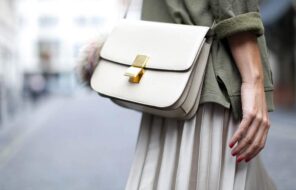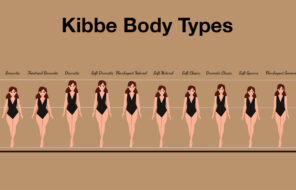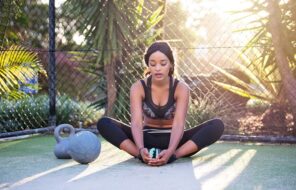Color blocking outfits is one of the easiest ways to stand out and look fashionable, while still seeming approachable and cheerful. The other great thing about color blocking is that it can be done with fairly basic, comfortable, and affordable items. The only question is – how can you figure out which color combinations will look good together?
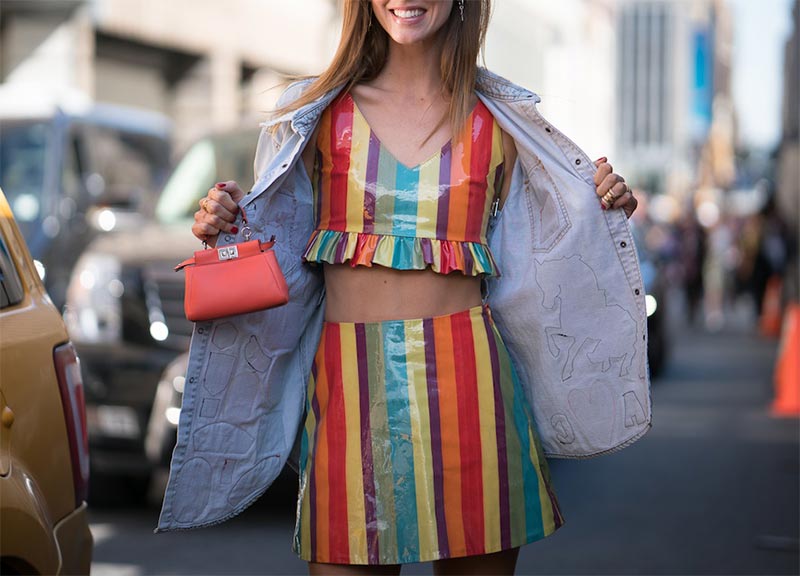
Read on to learn some basic color theory that is very important for color blocking, as well as some key color combinations that will always look amazing. I also give a few random color blocking fashion tips and tricks to help you along the way.
Lastly, remember: practice makes perfect. The more you play with color, and as you become more adventurous, you will be able to tell really quickly what looks good and what doesn’t, and you will also feel more comfortable taking risks. But first:
Color Blocking Rules: Contents
- What Is Color Blocking, Exactly?
- Color Wheel
- Other Color Blocking Terms to Know
- Key Color Combinations
- More Color Blocking Fashion Tips & Tricks
What Is Color Blocking, Exactly?
Color blocking is the combination of different solid panels of color. When it comes to color blocking in fashion, it means eschewing wild prints in favor of solidly colored items, or single items that are color blocked with panels of different colors. One dress made of three solidly colored fabrics would count as color blocking, as well as a solidly colored T-shirt, jacket, and pant combination.
Color Wheel
In order to understand how to combine colors, it is important to understand how the color wheel works. This circular rainbow is a must have in the bag of every artist and designer, regardless of which industry it is that they work in. The color wheel shows us how all of the colors relate to each other.
Other Color Blocking Terms to Know
• Primary colors: red, yellow, and blue. With these three colors, you can create any other color on the visible spectrum.
• Secondary colors: these are colors that are created when you combine two primary colors. They include orange, green, and purple.
• Tertiary colors: these are colors that are formed when there is about more of one primary color in a secondary blend. Orange-red or violet-blue are tertiary, for example.
• Warm & cool colors: one half of the color wheel is warm, evocating fire, sunshine, beach sand, while the other half is cool, reminding us of ice and winter. The warm colors start at the tertiary color reddish-purple, move through red, orange, yellow, to reach yellow-green. The cool colors start at green, and include teal, blue, indigo, and purple.
• Neutral colors: Most of these are not exactly colors, since they exist outside the color wheel. Black is the absence of color, white is the absence of hue and is the color of sunlight, gray is a mixture of the two.
In real life, these “colors” are rarely truly neutral – gray can veer to blue very easily, for example. Brown is a real color – it is a composite color, made up of the three primary colors, and it usually leans toward warm.
• Shade: When a color is mixed with black, making it darker, that’s a shade. Navy, for example, is a darker shade of blue.
• Tint: When a color is mixed with white, making it light, it makes a tint. Pink, for example, is a lighter tint of red.
• Saturation: Saturation is what defines how dense or intense the color is. Heavily saturated colors are very strong, whereas colors with low saturation are much more subtle.
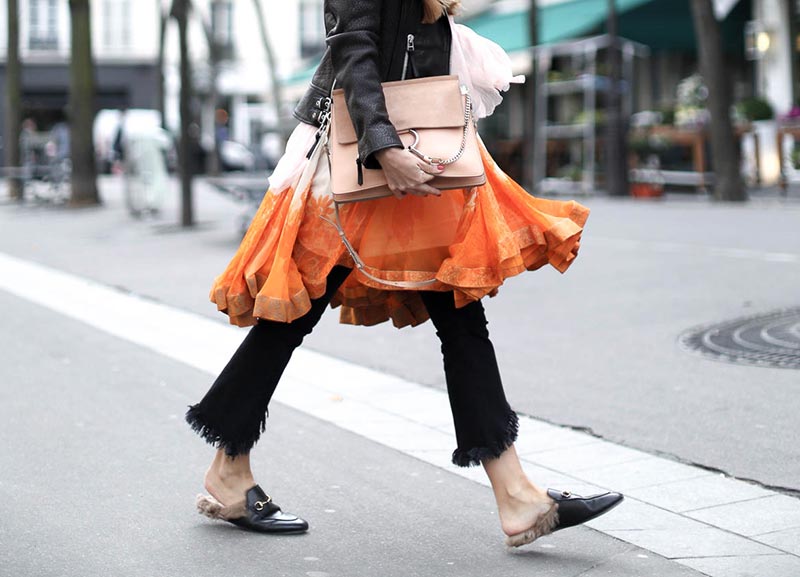
Key Color Combinations
In order to understand how color blocking works in fashion, it’s important to always remember what the primary color combinations are. Based on this information, you will always mix and match colors in your outfit expertly!
Monochrome Color Blocking
This is the easiest color blocking technique to pull off. Simply pair items that are all the same color. Your shade and tint could change from item to item, so you could wear dark blue jeans, a sky blue shirt, and navy shoes.
You can also add black and white to a monochromatic color-blocking scheme. Usually monochromatic schemes work well, although sometimes you risk looking washed out or overwhelmed with a single color. This is why variation in shades and tints is important.
With a monochromatic look it becomes important to understand what kind of effect lighter and darker colors can have. Darker shades absorb light, making things look smaller, while lighter shades make things appear larger. You can play with various kinds of illusions to flatter your figure when doing monochromatic color blocking.

Analogous Color Blocking
Analogous colors are colors that sit next to each other on the color wheel, and to really rock them in a color blocking technique, you are best off opting for three colors, two colors and a neutral, or two analogous colors and one shade or tint of one of those colors.
Orange-red, orange, and yellow make for a wonderfully summery blend, while teal, dark blue, and light blue are a bit more muted but just as beautiful. Note that when using three colors, there should be one primary color, one secondary color, and one tertiary color.
As you can see, this color blocking technique is almost as easy as using monochromatic colors, and it is a great way of easing your way into playing with color when crafting an outfit.
Complementary Color Blocking
Pairing complementary colors can be excellent, or disastrous, depending on how you pull it off. Complementary colors are simply two opposite colors on the color wheel. For example, purple and yellow, or green and red.
Opposite colors stand out against each other, and both end up looking brighter. This effect can be eye-catching, but it can also cause an unflattering clash.
There are a few ways to make complementary colors work: the easiest one is to have one of the colors dominate, and add its complementary color as an accent – think a 5:3 ratio.
The other way of rocking complementary colors is by playing with tints and shades, and avoiding overly saturated colors. For example, a pale pink can work very nicely with a pastel green for a preppy look, while forest green and dark red can give an autumn feel. A full strength green and red look, however, is hard to keep from being tacky (or overly Christmas-y).
Split Complementary Color Blocking
This is actually a variation on the complementary color scheme. You pick one color, and then instead of choosing its opposite, you add the two colors analogous to its opposite.
This means that if you chose green, you add to your outfit the two colors that sit next to red: violet, and red-orange. This creates the same contrast you would get from pairing complementary colors, but it is more balanced and understated.
As with most color blocking fashion choices, it is better to avoid symmetry. Have one color stand out as the main color in the look, and use the other two colors for accents.
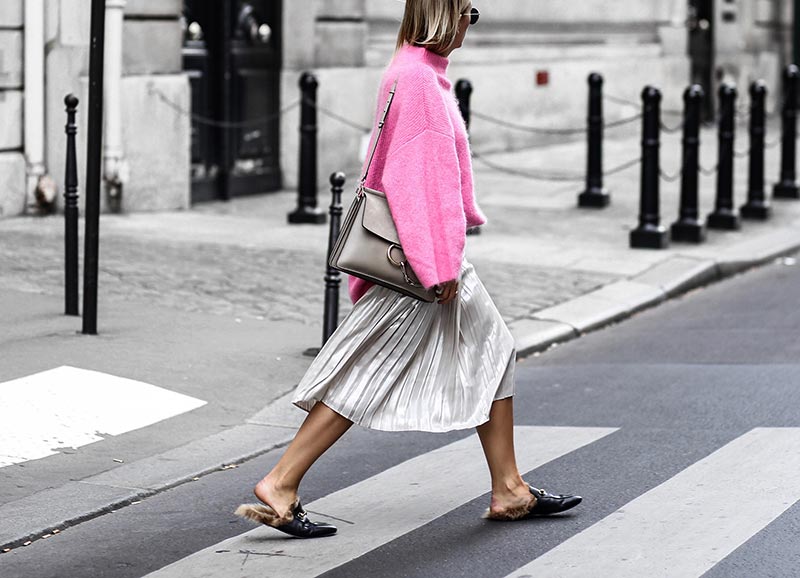
Triadic Color Blocking
The triadic scheme for color blocking includes three colors that are equidistant from each other on the color wheel. The three primary colors, when put together, make up a triadic color scheme.
It is a little like the complementary color scheme, in that the effect of the three colors together is very stark, so it is best to avoid wearing all three colors at full strength, and to opt for darker or lighter shades, rather than something overly vibrant.
Personally, I prefer triadic color schemes with tertiary colors, like reddish-purple, greenish-blue, and yellow-orange, because they seem more sophisticated and subdued.
Tetradic Color Blocking
Drawing an imaginary rectangle on the color wheel will give you the four-color tetradic color scheme. Color blocking with tetradic colors is an expert level fashion choice that can create really interesting yet balanced looks.
One way to think about the tetradic scheme is as two color pairs – have one color pair be dominant, and the other color pair act as an accent. So for example, if you are color blocking with yellow, orange, purple, and blue, you can choose the warm shades as the stars, and the cool shades as the accents. It could be a yellow top, orange bottoms, purple shoes, and blue jewelry.
As always, the more saturated the colors, the higher the chances of clashing, so by avoiding symmetry and having a mix of tints and shades, you can guarantee a fashion win.
More Color Blocking Fashion Tips & Tricks
• Neutrals are your friends! You can always fit a neutral into a color-blocked look, and sometimes it can add a whole level of sophistication. Whether you throw on nude pumps, a white jacket, or some black jewelry, it’s hard to go wrong with a neutral.
• When you color block, remember that your outfit doesn’t exist on its own. Once you put it on, you’re also adding your natural coloring to the look. A very yellow skin tone can look sickly next to some shades of purple, while greens can bring out a pinkish undertone in an unflattering way.
Your hair color also has undertones that can work well or clash. Try your color-blocked outfit on in good lighting to figure out if it works with your natural coloring.
• Be careful with some pairings that rationally should work together: black and navy blue, and white and cream. Both color combinations should work because they are so similar, but they end up looking like you were hoping to pair two of the same color.
• Take a color wheel with you when you go shopping, so you can instantly see what kind of color combinations you can create with every new item you purchase.
• Practice, practice, practice! An eye for color is not something that comes instantly, but you can certainly develop it.
• Get inspired everywhere! Everything from an outfit you saw on the runway, to your favorite painting, to a particularly unique website graphic design can be inspiration for your next color-blocked outfit.
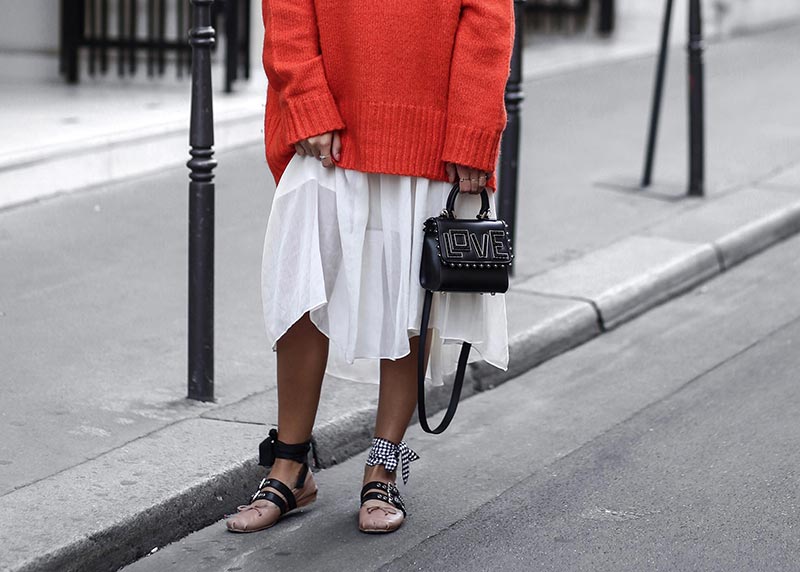
What’s your favorite way to color block? Which are your favorite color combinations? Share your thoughts!
Photos via @aylin_koenig, @bartabacmode, @chiaraferragni

